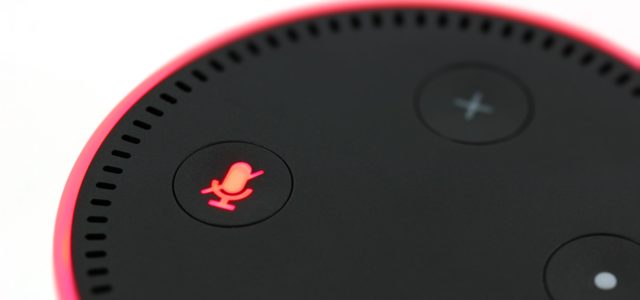Once reserved for corporations with substantial war chests full of cash earmarked for “innovation” and “disruption,” digital transformations are now comfortably a part of the business mainstream.
In 2019, we can expect these and other digital transformation trends to take off in a huge way.
Location Services Become More Useful
The humble smartphone has changed terrestrial life as we know it — and one way it’s done so is through location services. Whether companies conduct most of their business online or operate a brick-and-mortar presence, the technology baked right into clients’ and customers’ telephones is unlocking all kinds of new conveniences:
- When a customer arrives at a business location during peak busy hours, the company’s mobile app could send that individual a notification indicating the best place to park.
- Using the same concept, customers can pre-register, check-in, or perform any number of other necessary bureaucratic tasks, automatically, without waiting in line for a receptionist.
- Location beacons interact with the Bluetooth or NFC “radios” within smartphones to supply hyper-local information to users. Within large buildings or retail locations, for example, a customer could use that company’s app, if it’s equipped with location beacon technology, to receive turn-by-turn directions for finding the products they need.
In short, leveraging location services helps remove friction from the customer experience — and that can translate into less busywork for employees and a greater focus on meeting and exceeding expectations in other ways.
New Cloud Pricing Models Deliver Flexibility and Cost Savings
Rare is the company that has no need for data and process mobility. But where does the cloud go from here? One trend we’re likely to see is more cloud service providers moving far more flexible pricing models.
Pricing for cloud and server infrastructure is moving away from annual or monthly terms and toward a by-the-second business model. It’s not a surprise: bandwidth needs fluctuate daily and even hourly. This means companies have been paying for services during times when they’re not strictly necessary.
For example, certain times of the year see far higher web traffic for certain kinds of businesses and service providers. The ability to automatically dial in the right services at the right price is nothing short of a game-changer for cost-conscious businesses who rely on the cloud in a big way.
Blockchain for Smarter Contracts
It’s not clear right now how much staying power blockchain has as a currency. Bitcoin, Etherum, and others have endured growing pains and seem like they’re inching toward the kind of pricing stability that fiat currencies require. Some of the most interesting applications for blockchain in business have nothing to do with Bitcoin, though.
Blockchain technology can also power something called a “smart contract,” which stands a good chance of bringing a new level of trust and autonomy to B2B transactions. Smart contracts are a legally binding combination of a computer program and a traditional contract. They execute specific commands when pre-determined criteria are met. For example: when a warehouse management system receives a verified payment for a shipment of product, automated retrieval and palletizing equipment in that warehouse can automatically begin prepping the required items for shipment.
More broadly, blockchain also makes it easy to track and permanently archive details about product custody, all the way back to its origin, and even to the piece of equipment that produced it. This should deliver new levels of accountability and traceability in high-risk supply chains, such as food and beverage, where recalled products must be traced and dealt with extremely quickly.
AI and Digital Assistants Become the Norm
During I/O 2018, Google gave what could be the spookiest tech demonstration in recent memory. During the presentation, onlookers bore witness to Google Assistant successfully impersonate a human speaker well enough to have a conversation with a salon receptionist — and book an appointment on behalf of its owner.
It seems like far-future stuff, but chatbots and rudimentary speech recognition technology has been around for a while already. Spotify, Whole Foods, MasterCard and Pizza Hut are just some of the companies that are already using chatbots to make interactions with customers faster and more accessible around-the-clock.
So, like cloud technology, the question is where things go from here. Here are some predictionsfor how small and large enterprises will use artificial intelligence in 2019 and beyond to add value to their services and products:
- By the year 2020, 10 percent of all sales will be “influenced by” digital assistants. Of the $3.5 trillion in sales made during 2017, $2 billion in merchandise or services changed hands through the use of voice-enabled digital assistants.
- By 2021, three-quarters of enterprise-level mobile apps will come equipped with some form of artificial intelligence, leading to fully half of all consumers using AI to interact with the companies they care about.
This barely scratches the surface of what we can expect in 2019 and beyond, in terms of how our companies and processes will disrupt themselves, and their competitors, using digital technologies.
Alternate Realities, Virtual Realities, and Perpetual Innovation
Need even more? Think about what alternate reality and virtual reality mean for the future of “window shopping” and trying out clothes and other products in a digital retail setting.
In other words, there’s disruptive technology everywhere we look. And even if some of it doesn’t seem like it has an immediate business application, it pays to be prepared anyway — prepared to be delighted by the possibilities and prepared to commit to the ongoing learning that smart investments require.
Article by channel:
Everything you need to know about Digital Transformation
The best articles, news and events direct to your inbox
Read more articles tagged: AI, Blockchain, Cloud, Featured







